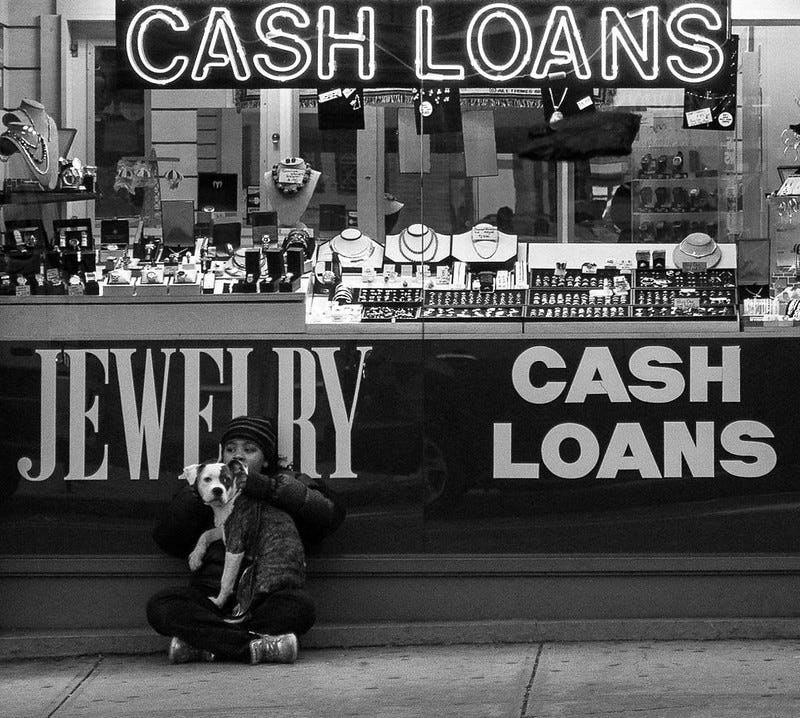CLASSIC FILM REVIEW: The Pawnbroker
A film about hate, violence, and survival
By Alan Herrmann
WRITER

“I touch no one and no one touches me. I am a rock. I am an island.” - Simon and Garfunkel
The Pawnbroker (1964) is one of my favorite films. Rod Steiger, who played the leading role of Sol Nazerman, thought it was his best role, and I agree completely. This says a lot, considering the treasure trove of parts Steiger played over the years. An intense actor, who often delivered lines in a unique staccato style, Steiger earned early attention as Marlon Brando’s mob connected brother in Elia Kazan’s On the Waterfront.
Like Brando, James Dean, Montgomery Clift, Julie Harris, Geraldine Page, and other actors from the 1950s, Steiger adopted the “Method” style of acting. This technique emphasized immersion into a role, where the actor would often remain in character even when not performing.
Sol Nazerman is a pawnbroker in Harlem and a survivor of the Holocaust. His wife and children did not survive. Before World War II he was a professor in Leipzig. Over twenty years later, Sol lives on Long Island with his sister-in-law and her family. He sleeps with his best friend’s widow, who also lost her husband in the camp.
He is quiet and disinterested in the world around him. He despises the unfortunate people who frequent his pawnshop. Some are poor, desperate individuals who pawn items for quick cash, often to buy alcohol or drugs. Others are elderly, seeking conversation to ease their loneliness.
Nazerman is also lonely, but he keeps his distance. His view of humanity is that they are all scum, as he points out to his young Puerto Rican assistant, Jesus Ortiz (Jaime Sanchez). He makes no distinction about race, creed, or nationality.
Sol’s pawnshop is used as a front for a racketeer named Rodriguez, played by Brock Peters, known for his role as Tom Robinson in To Kill a Mockingbird. Rodriguez is powerful and vicious, nearly the polar opposite of Tom Robinson.
Sol is in denial as to how much of his existence is owed to Rodriguez, but is eventually forced to understand the truth. His so-called freedom is only an illusion. He is owned by Rodriguez and his world; the pawnshop is a prison of sorts. Even the set of the pawnshop is made up of a labyrinth of wire cages, reminding Sol of the concentration camp.
Neighborhood social worker Marilyn Birchfield (Geraldine Fitzgerald) tries to insert herself into Sol’s life but realizes how damaged he really is and admits she cannot reach him. When Sol is robbed and Ortiz sacrifices his life for him by getting in the way of a bullet, we finally see the humanity that Sol has buried for so many years. He even impales his hand on a spike to feel physical pain and opens his mouth, but no sound comes out. It is too late for Sol Nazerman. The horror of his present life has caught up with the horror of his past.
The film, directed by Sidney Lumet, left its mark and influence on several artists and filmmakers. The score, for example, was Quincy Jones’ first film. He used dramatic cinematic music, plus jazz and pop tunes. A familiar tune, “Soul Bossa Nova” turns up later in the Austin Powers movies.
The film’s gritty, black and white cinematography shows a bleak, claustrophobic, and dangerous Harlem in the 1960s. Scenes of the concentration camp range from a few moments to very brief, almost subliminal flashes. The Pawnbroker helped influence later films about the Holocaust including Shindler’s List, where Stephen Spielberg used black and white photography to great effect.
The film also pushed boundaries. There is a scene where Ortiz’s girlfriend bares her breasts for Sol in an effort to get money for Ortiz. It is juxtaposed with the quick views of nudity in some of the concentration camps. These were clearly controversial and created a stir with censors. As a result, the film helped create the MPA rating system in 1968, so audiences knew what to expect.
The Pawnbroker is a film that was ahead of its time, boldly addressing timeless themes of hate, violence, and survival.
Local Obituaries
To view local obituaries or to send a note to family and loved ones, please visit the link that follows.
Support Award-winning, Locally Focused Journalism
The FXBG Advance cuts through the talking points to deliver both incisive and informative news about the issues, people, and organizations that daily affect your life. And we do it in a multi-partisan format that has no equal in this region. Over the past year, our reporting was:
First to break the story of Stafford Board of Supervisors dismissing a citizen library board member for “misconduct,” without informing the citizen or explaining what the person allegedly did wrong.
First to explain falling water levels in the Rappahannock Canal.
First to detail controversial traffic numbers submitted by Stafford staff on the Buc-ee’s project
Our media group also offers the most-extensive election coverage in the region and regular columnists like:
And our newsroom is led by the most-experienced and most-awarded journalists in the region — Adele Uphaus (Managing Editor and multiple VPA award-winner) and Martin Davis (Editor-in-Chief, 2022 Opinion Writer of the Year in Virginia and more than 25 years reporting from around the country and the world).
For just $8 a month, you can help support top-flight journalism that puts people over policies.
Your contributions 100% support our journalists.
Help us as we continue to grow!
This article is published under Creative Commons license CC BY-NC-ND. It can be distributed for noncommercial purposes and must include the following: “Published with permission by FXBG Advance.”













